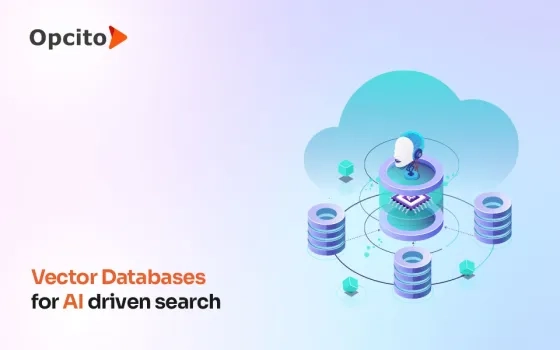Data integration serves as the glue holding the contemporary IT ecosystem intact. It used to be a tiny map, with few junctions, little heavy traffic, and few potential dangers, and now it’s a giant network of networks.
Today’s IT world is considerably different. Organizations have to deal with greater demands for data integration. Numerous point-of-sale systems, mobile applications, CRM, marketing automation, and ERP systems are in use by businesses.
Network correspondences that must handle more enormous traffic volumes and have far more advanced security and reliability features have replaced the tiny map of the past.
Why do companies data integration techniques?
Well, most businesses have several intricate activities that need data from several sources to function well. It might not be easy to combine data from disparate sources.
The burden and expenses of handling different datasets are reduced for those who can process and store data in a single system. In addition, this enables them to direct resources toward other key functions.
Learn about data integration in general, effective methods for integrating fragmented data, tools to take into account, and more in this blog.
What Is Data Integration?
Data integration combines data from diverse internal and external sources in one place to provide a cohesive picture of the data.
These days, businesses seek data to guide their business decisions. However, the information needed for business intelligence (BI) and analytics operations frequently resides in various databases and apps. The hosting of these systems is possible on-premises, in the cloud, on IoT devices, etc. Moreover, each system logically stores data differently – in structured, unstructured, and semi-structured formats. Therefore, businesses can concentrate the necessary data at one location. This guarantees its integrity and quality with the correct data integration strategy, resulting in better and more trustworthy insights.
What Is Data Integration Design?
Data integration design defines design specifications for original data formats, regularity of updates, historical and iterative data volumes, transformation techniques, and mappings from conceptual to intellectual to physical data models. It is a crucial component of the quality standards for any corporate AI application.
The specification of data integration design must be thorough for the specified use cases while enabling extensibility to encompass other use cases and data sources for potential future possibilities. Data integration design leads to the intended end-user experience.
What Is Data Integration Architecture?
Data integration architecture specifies the flow of information between IT resources and organizational activities to facilitate system interoperability. However, data is kept in various places nowadays, frequently in numerous forms and in a convoluted, non-integrated manner. As a result, people waste a lot more time looking up data and information than really using it to improve their business decisions. Moreover, manual data sharing makes it challenging to gather knowledge for decision support, which affects customers and corporate performance.
Establishing a data integration architecture enables the standardization and integration of diverse data to facilitate quicker decisions. The underlying data and information used by functional units must be systemised and architected to support group decision-making and rapid innovation.
Examples Of Data Integration From Various Sectors
The Healthcare Industry
It takes as much knowledge as possible to treat a person. It only degrades patient care when that data is dispersed across systems. The healthtech design sector might revolutionize if all patients’ information is integrated into a single, comprehensive record. This will help control expenses, improve results, and elevate health and well-being.
Finance Sector
Financial fraud is a serious and rising issue. Banks and other organizations can spot, stop, and prevent fraud if all of their data is connected. Once it is, AI can search the data for abnormalities and outliers, frequently spotting fraud before it impacts the client. However, that type of early response is not feasible if the data is still compartmentalized or fragmented. This is where fintech design and data integration technique comes into picture.
Telecommunications Industry
In telecommunications, providing top-notch customer service is essential yet challenging to maintain due to the enormous work required. A 360-degree perspective of business-client connections is attainable by integrating data from as many sources as is practical. As a result, identifying and fixing problems that cause more customer care inquiries or worse customer service experiences is possible. With enough data, businesses will eventually be able to treat each consumer uniquely.
How Do You Create A Data Integration Plan?
Consider the use case you want to evaluate and the data you’ll need to get there before you start developing your data-integrated platform.
Set Clear Goals For Your Evaluation
Define the goal of your evaluation before you start.
– Which sector or industry to focus on?
– What changes do you want to see?
– What KPIs can you use to gauge progress?
– Recognize the principles you hope to draw from your data. You may then concentrate your energies on what is most crucial.
Analyze The Systems
Carefully examine each system that interacts with the data, from data extraction to the final, aggregated output. Ensure that the systems are correctly connected, including any cloud-based ones, and note any settings required for the data transmission.
For example, our data integration specialists may decide to use SFTP ports, APIs, data connectors, or a combination of these, depending on the systems involved.
Find out whether there are any manual procedures in place and whether or not they are scalable. Consider whether outdated systems are still contributing data and whether a more up-to-date system can take their place.
Determine The Ideal Data Source For Each Data Element
What is each element’s data source? Salesforce or a third-party data source?
Investigate these specifics in-depth to see whether any data cleansing chores are necessary to get your data ready for analysis.
– Find out how each data element is specified in the data source.
– What form of data is it?
– What formatting can be helpful?
– How common are format inconsistencies?
– What, if any, is its default setting?
– Are null values permitted, and how often do they occur?
– Just how precise are the values?
– What is the frequency of errors?
– Values are created once, or have they been modified afterwards, and if so, how often?
Decide Which Data Is Necessary For Your Analysis
Do you require all rows of data from the data source for your analysis to produce reliable findings, or can you filter a particular segment (subset)? For instance, does your study focus on global corporate activity or simply a select few? Are you concentrating on a specific demographic or a range of values, such as clients with over 200,000 in sales? Find answers to these questions, and you are ready to go!
Types Of Data Integration Design Patterns
Data Integration Pattern is a systematic technique for integrating data. Furthermore, DIP aids in standardized data integration as a whole. Therefore, our objective in this instance is to present the patterns of the standardized data integration methods.
1. Data Migration Pattern
Migration describes the process of moving data between systems. Migration includes a source system, where the data is located before execution. This criterion establishes the scope of the data to be migrated. Then, the transformation will be applied to the data set, a destination system where the data will be inserted, and the ability to record the migration’s outcomes so that the final and desired states can be identified.
For all data systems, data migration is crucial. We devote a lot of effort to producing and preserving data. Migration is essential to retain the data independency of the technologies we employ to create, view, and manage it.
2. Broadcast Pattern
When data is broadcasted, it is continuously and in real-time moved from one source system to multiple destination systems.
You will require a broadcast, bi-directional sync, or correlation pattern if it is necessary to maintain our data current across many systems over time. Data is exclusively sent from the source to the destination using the broadcast pattern, much like migration patterns. However, it is a transactional pattern rather than a migration pattern.
As a result, it only performs the message processor logic for recently changed things rather than for all objects within scope. The broadcast pattern is incredibly beneficial when a system has to acquire some information from or originating in another system in almost real-time.
3. Bi-Directional Sync
The bi-directional sync data integration pattern combines two datasets from two different systems while still respecting their necessity to remain as separate datasets. This integration is necessary since multiple systems or tools are used to carry out various tasks on the same dataset.
For instance, you may have one system for managing orders and another for providing customer service. You could discover that using these two systems instead of a suite that covers both functions and uses a shared database is significant since they are the best type. Using bi-directional sync to communicate the dataset, you can use both systems while keeping a consistent real-time view of the data in both.
Depending on the circumstances, bi-directional sync can act as both a facilitator and a rescuer. Bi-directional sync can be utilized to simplify your processes if you have two or more independent, different representations of the same reality.
4. Correlation Pattern
The correlation data integration pattern is a design that locates the junction of two data sets and synchronizes that analyzed and evaluated dataset in both directions only when that item organically appears in both systems. Correlation synchronizes the overlap, like how the bi-directional pattern synchronizes the union of the scoped dataset.
The elements in the correlation pattern in both systems may have been manually entered into both of them, such as when two sales reps entered identical contact information into two different CRM systems. Or perhaps someone else integrated them as part of a separate process. However, the correlation pattern will agnostically synchronize such items regardless of where they originated as long as they are present in both systems.
5. Aggregation Pattern
Combining data from several systems into one is known as aggregation. A data analyst would wish to produce a report that uses information from all the systems. Each system might have a daily migration created to a data repository, which could then be queried against a database. However, a new database would then monitor and maintain sync.
The significance of the aggregation pattern comes from its ability to combine and integrate data from several systems into a single application. This indicates that the data is available when needed, doesn’t get duplicated, and can be combined or processed to create the desired dataset.
Conclusion
It’s essential to keep in mind that data integration is a continuous process. Technologies are constantly developing at a fast pace. In addition, there are other data sources accessible. Therefore, integration solutions must be able to adapt and evolve with the times. If not, they rapidly become out-of-date and useless. Therefore, ensure your data integration initiatives are agile enough to adequately address the future while designing them.




















